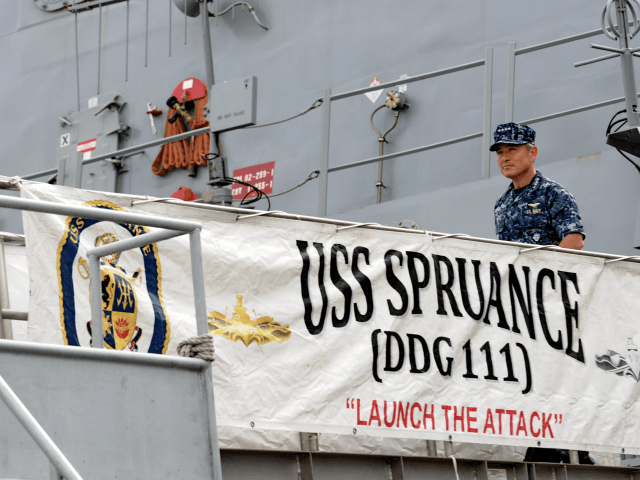U.S. Pacific Commander Admiral Harry Harris has been picked as the new U.S. Ambassador to Australia, in a move that has been warmly welcomed Down Under.
The White House confirmed the move in a statement acknowledging the achievements of the Harvard and Oxford educated admiral who in the past has called China a “disruptive transitional force” in the Indo-Pacific region.
“A highly decorated, combat proven Naval officer with extensive knowledge, leadership and geo-political expertise in the Indo-Pacific region, he graduated from the US Naval Academy in 1978 and was designated a naval flight officer in 1979,” the White House statement said.
Australia’s Prime Minister Malcolm Turnbull wasted no time in personally applauding the man now headed for Canberra.
Given China’s increasing efforts to expand its presence in the disputed South China Sea, the appointment of Admiral Harris sends a message that the U.S. is keen to remain engaged with its major allies in the area and it has no intention of backing away from any future possibility of conflict.
The Asian power’s construction of artificial islands in the South China Sea was once called by Admiral Harris the “Great Wall of Sand”.
In April last year during testimony to the U.S. House Armed Services Committee he did not hesitate to take China to task for its global ambitions. Often described as a China hawk, told the committee:
China has fundamentally altered the physical and political landscape in the South China Sea through large scale land reclamation and by militarising these reclaimed features.
Beijing continues to press Japan in the East China Sea, is stepping up diplomatic and economic pressure against Taiwan, and is methodically trying to supplant US influence with our friends and allies in the region.
Furthermore, China is rapidly building a modern, capable military that appears to far exceed its stated defensive purpose or potential regional needs.
China’s military modernisation is focused on defeating the U.S. in Asia by countering U.S. asymmetric advantages.
Admiral Harris, who met with PM Turnbull in New York in May, has been a regular visitor to Australia and is well known to both sides of federal politics.
For its part, Australia’s government is committed to building up the country’s defense forces to increasingly engage its regional neighbours. Its 2016 Department of Defense White Paper was seen as controversial because it heavily criticizes China’s military buildup in the South China Sea and proposed large military spending increases.
Australia’s new defense plan emphasizes a major naval buildup over the next 10 years, include 12 long-range submarines, nine new frigates and 12 offshore patrol vessels.
In addition, Australia’s plan honors existing commitments to acquire 72 F-35A Joint Strike Fighters. Royal Australian Air Force (RAAF) capabilities will be boosted by 15 P-8A maritime patrol aircraft, 12 EA-18G Growler electronic attack aircraft and seven Triton surveillance drones.
Furthermore, Australian forces are being tasked to operate seamlessly with US forces at sea, on land and in the air.
Follow Simon Kent on Twitter: Follow @SunSimonKent or e-mail to: skent@breitbart.com

COMMENTS
Please let us know if you're having issues with commenting.